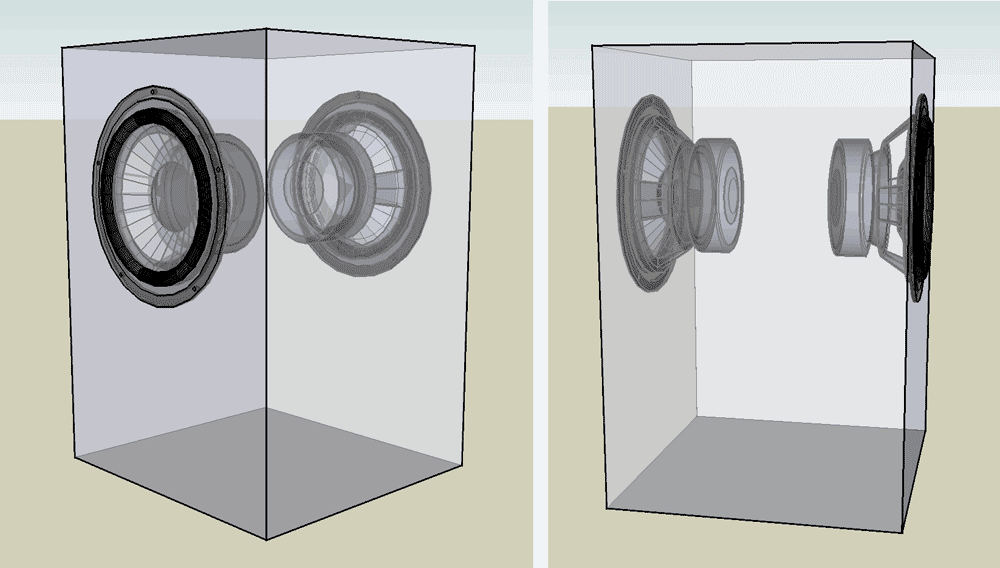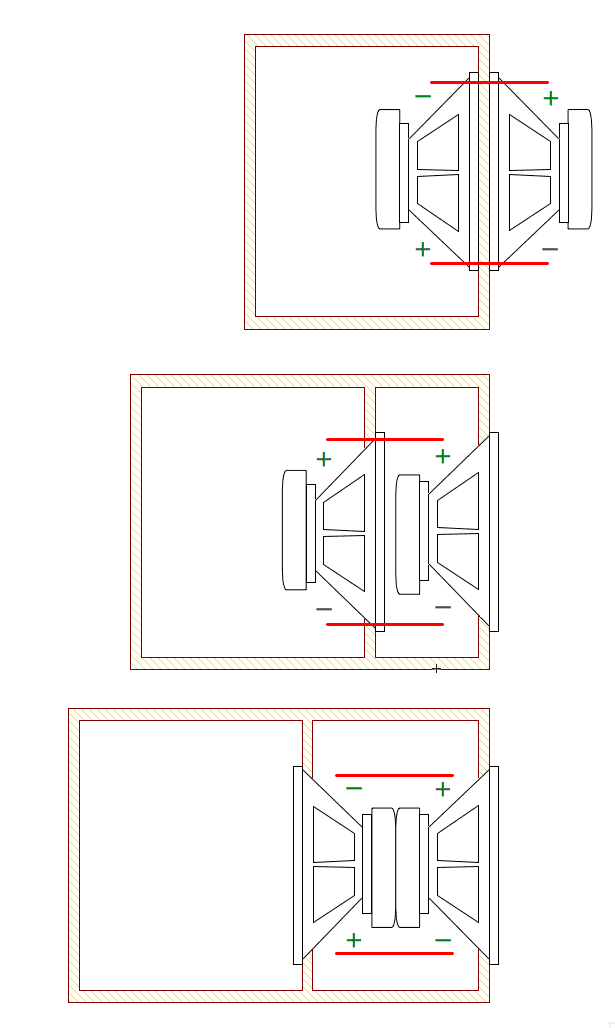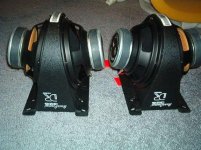HI .
some time ago I read, I don't know where, about identical speakers (woofer or subwoofer) facing each other, cone against cone. one pair for each piece of furniture.
Now I would like to read further but not knowing what this configuration is called, I can't find what I'm looking for.
It's similar to push pull but unlike the latter, what I mean has the cones arranged on planes set at 45 degrees.
the only image found, which comes close to what I'm writing about, in order to understand what I mean, is the attached one.
can you tell me what it is?
Thank you .

some time ago I read, I don't know where, about identical speakers (woofer or subwoofer) facing each other, cone against cone. one pair for each piece of furniture.
Now I would like to read further but not knowing what this configuration is called, I can't find what I'm looking for.
It's similar to push pull but unlike the latter, what I mean has the cones arranged on planes set at 45 degrees.
the only image found, which comes close to what I'm writing about, in order to understand what I mean, is the attached one.
can you tell me what it is?
Thank you .
Last edited by a moderator:
Greets!
Yours is just two in a box and angled to get a specific polar response to normally match up with a horn like done in these studio monitors.
Yours is just two in a box and angled to get a specific polar response to normally match up with a horn like done in these studio monitors.
Push-push?

If your portrayal of the 2 drivers is conveying the orientation when mounted tahn what GM said.
dave

If your portrayal of the 2 drivers is conveying the orientation when mounted tahn what GM said.
dave
Please find some photo (on internet) and post it here. Nobody can figure out what you are trying to describe.no, they are not these
Here are a couple where the angle is smaller - which is what I typically think of since a baffle like this can also be used to cram in more woofers (was a pretty common method years ago in car audio).

https://www.fulcrum-acoustic.com/product/us221-2-dual-21-direct-radiating-subwoofer/

https://www.fulcrum-acoustic.com/product/us221-2-dual-21-direct-radiating-subwoofer/
Last edited:
Can do normal sealed or vented.
Speakers are just mounted on splayed baffle.
This case box volume is what is required for 2x drivers.
Speakers are just mounted on splayed baffle.
This case box volume is what is required for 2x drivers.
I've already searched but found nothing.Please find some photo (on internet) and post it here. Nobody can figure out what you are trying to describe.
but I can say what little I remember. I had read a single post among many other posts made by other people on this forum. this person who I no longer know who he was, invited the OP to "discover" this system.
a system proposed by a speaker manufacturer. Naturally I don't remember what the post was, nor the title, nor the manufacturer.
perhaps, and I emphasize perhaps, the theme of the post was the reduction of the intrinsic distortion of large low frequency speakers .
we were talking about the fact that the acoustic wave is crushed between the two speakers, producing some advantages that I would like to know
Last edited:
So, none of the pictures/photos posted by other members here in this thread are not what you have on your mind? And you don't know who, when and what posted about that "magical" loudspeaker?
This thread is doomed and should be closed...
This thread is doomed and should be closed...
the second photo that mattstat published, the one below, is the one that comes closest.
however I'm not sure if it was reflex loading
however I'm not sure if it was reflex loading
https://www.diyaudio.com/community/...m-open-baffleless-full-range-speakers.374043/
This thread has a long discussion about it
This thread has a long discussion about it
OK, a bit more angle than normally required for studio monitors, so over some bandwidth (BW) will average out/balance their output, so guess it can keep distortion low over 'some' BW and boxed like shown is a short parabolic horn stub.the second photo that mattstat published, the one below, is the one that comes closest.
so wanting to give a short and quick summary what are the advantages?.
if I use 2 opposing medium or low quality speakers I can equal some performance of a single driver
more prestigious? .
it's true that for two speakers the cost doubles and the price difference narrows compared to a single driver but for now these are just questions I'm asking.
if I use 2 opposing medium or low quality speakers I can equal some performance of a single driver
more prestigious? .
it's true that for two speakers the cost doubles and the price difference narrows compared to a single driver but for now these are just questions I'm asking.
My take on the short summary, and speaking in generalities: the primary benefit is putting two drivers in a smaller baffle area. Having two speakers instead of one (of the same type) will increase output capability. Voltage sensitivity will also increase if the drivers are wired in parallel. Looked at from the other side, for the same output less excursion will be required from each driver. Lower excursion is easier to keep linear.
One driver that's capable of the same volume displacement as two will typically have less sensitivity because the changes required (larger voice coil, more suspension travel, etc.) typically use components that weigh more. That directly impacts sensitivity, unless a stronger magnetic system can be employed to offset it (there are physical and budgetary limits that come into play).
But there are a lot of details beyond a simple analysis. One high quality speaker may outperform multiple smaller cheap speakers overall, and certainly will in some performance aspects. It comes down to what exact speakers are being compared, what's important to you, and what trade-offs make sense for a particular application. If you just want loud, have a limited budget, and don't have a lot of amplifier power, multiple cheap drivers may be the right answer. If you have a larger budget, have audiophile expectations for flat frequency response, detail retrieval, better distortion performance, etc., things will lean toward the more expensive speaker.
One driver that's capable of the same volume displacement as two will typically have less sensitivity because the changes required (larger voice coil, more suspension travel, etc.) typically use components that weigh more. That directly impacts sensitivity, unless a stronger magnetic system can be employed to offset it (there are physical and budgetary limits that come into play).
But there are a lot of details beyond a simple analysis. One high quality speaker may outperform multiple smaller cheap speakers overall, and certainly will in some performance aspects. It comes down to what exact speakers are being compared, what's important to you, and what trade-offs make sense for a particular application. If you just want loud, have a limited budget, and don't have a lot of amplifier power, multiple cheap drivers may be the right answer. If you have a larger budget, have audiophile expectations for flat frequency response, detail retrieval, better distortion performance, etc., things will lean toward the more expensive speaker.
- Home
- Loudspeakers
- Multi-Way
- opposing speaker pair configuration



